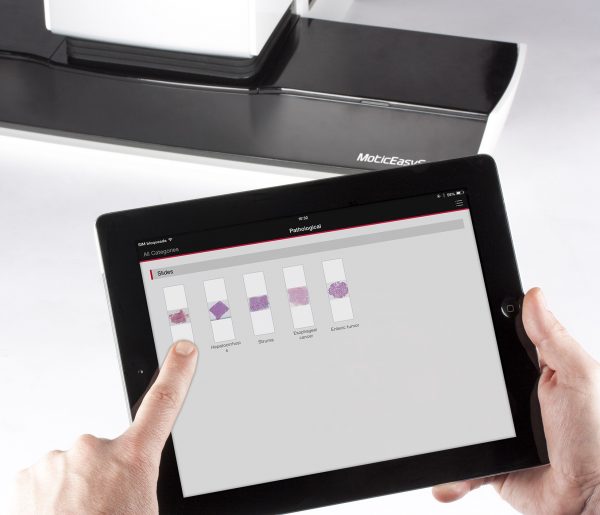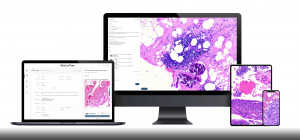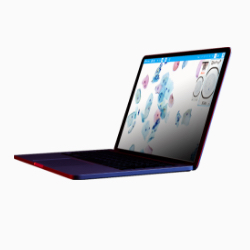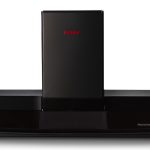With the increasing acceptance of digital pathology as a healthcare concept, many organizations are also growing interested in implementing telepathology into their workflows. Telepathology is a subset of digital pathology that the American Telemedicine Association defines as “electronic, multimedia communication between pathologists for the purpose of primary diagnoses and diagnostic consultation second opinion.”
With so many different offerings, where should a lab start its search in order to find the right system? What are some of the perceived barriers to implementing telepathology? And what are the real ones?
The following are some frequently asked questions that we often encounter during initial conversations with pathologists, administrators, and lab directors:
Will It Be Too Expensive?
Many people immediately think of high-volume scanners when they hear the term digital pathology. Hardware that boasts of scanning hundreds or even thousands of slides at a time makes big, splashy headlines. But high-volume scanning often comes with a similarly hefty price tag. The good news is that many telepathology users don’t actually need scanning volume at that scale, and single or lower-throughput scanners tend to cost far less than their high-throughput counterparts. And implementing telepathology also creates long-term savings for hospitals and labs by decreasing the costs of transporting slides and clinicians.
Moreover, with the global pathologist shortage, the value of telepathology goes beyond just how much a system costs or a budget bottom line. Rather, the true return on investment can be measured by the increase in patients diagnosed in a timely manner and subsequent improvements in care and outcomes.
When viewed with that rubric, telepathology systems can prove themselves truly priceless to pathology practitioners.
Will It Be Too Slow?
Because digital pathology is such an all-encompassing term, speed matters in some use cases, but not all. For a high-throughput research lab creating an enormous data lake for machine learning, accurate high-volume scanning is key. But for a hospital pathologist who needs to read a frozen section within ten minutes? Even the fastest FDA-approved scanners would be hard-pressed to scan an entire slide with enough time left over for prepping and reading the slide. These labs are better off using remote, live view applications that can generate real-time images in seconds that offsite pathologists can read right away. In this use case, the question of scanning speed is virtually eliminated because the clinician works directly with the sample and not from a scanned image.
How Do I Know It’s Accurate?
This question is the big one! For any lab, reliability and quality are key. In the past, many hospitals have been wary of implementing digital pathology because they know their reputation is on the line if the machine fails, produces an inaccurate result, or simply can’t render an image clearly enough for diagnosis. The good news is that the industry takes this question just as seriously as clinicians do. The end user’s need for accuracy and reliability drives our innovations, with different regulations also safeguarding the process.
Will We Need a Lot of New Technology?
IT needs are a real concern when decision-makers start looking at implementing digital pathology. This barrier is why we encourage administrators, pathologists, and lab directors to include their IT department as early as possible in the discovery process when speaking with solutions providers. Technicians can help both the laboratory users and the telepathology system providers understand what the lab is currently equipped for in terms of implementing telepathology and what upgrades or additional equipment it might need. Bringing in IT early on helps to make implementation as seamless as possible.
I Can’t Really Diagnose Cases That Way, Can I?
We always get a handful of US-based doctors asking about FDA approval at trade shows, and we understand why! At the moment, most WSI scanning systems are approved solely for research use in the States, with only Philips and Leica having cleared FDA approval for primary diagnosis.
But telepathology that involves operating a slide scanner remotely in real-time falls under different rules, with different use cases. Because the pathologist is working directly with the slide rather than with a flattened, 2D image, some judgments such as remote frozen section cases can be rendered in this way. This kind of telepathology essentially brings the lab directly to the pathologist, rather than the other way around.
US doctors can also collaborate with colleagues in other parts of the world via scanned virtual slides and many, in fact, already are. Motic’s partnership with the ASCP allows clinicians in under-resourced areas of sub-Saharan Africa to upload slides that experts in the US can read and diagnose, thus leveraging telepathology for remote consultations with an international impact.
The Most Important Question
In our opinion, the most important first question to ask before implementing a telepathology system is actually: What is our organization hoping to do through implementing telepathology?
Knowing the clear purpose of why your organization is moving in this direction will help clarify a number of other factors, including what kind of system the end-users need and what kind of budget administrators need to plan for. More importantly, unlike the frequently asked questions above, it’s the one question that a digital pathology provider can’t answer for you.
At Motic, our mission is to make digital pathology approachable for everyone. If you’d like to learn more about our telepathology solutions or see how we can guide your lab to take its first steps with telepathology, please contact us today!







